#ballantrae
Explore tagged Tumblr posts
Text
Ballantrae Beach 3/3/24
2 notes
·
View notes
Text
FOURTEEN
The Stinchar, descending from its interior heights, winds through a vale of which the scenery is, in my mind, unequalled, in wild beauty, by anything else in Scotland; and falls at last into the sea at Ballantrae.
ROBERT HERON, A Topographical Description of Scotland (1797)
AS OUR BUS rattles up the road that hugs the western sea, a large vehicle with four laughing men in it whistles past us towards Kennedy’s Pass, fishing rods sticking out of a side window like aerials. They may well just be off the Irish boat.
Fanning its tail behind it like a hand of cards, a kestrel floats on the breeze above the raised beach of Ballantrae and rides the sky beyond one of the oldest industrial buildings in Scotland, a windmill built in 1696. The weather here on the south Ayrshire coast has downgraded itself from unsettled to changeable and six stolid cows gather at a gate, clearly expecting rain more than the Met Office does.
A madcap aristocrat used to fly a biplane on the breezes here. In March 1928 Time magazine wrote of the daughter of Viscount Inchcape, head of P & O Ferries:
‘Dark, not unattractive, graceful, habitually well-gowned and bejeweled, Miss Mackay was the envy of most women. Her silver Rolls-Royce flashed by at breakneck speed. Her horses invariably galloped.’
Elsie Mackay was born in colonial India and was bred on the family estate at Glenapp castle, a mile and a half south of Ballantrae (the castle is reportedly where Churchill and Eisenhower planned D Day). In 1917 she eloped with Denis Wyndham, a South African actor, and after the war she became the silent screen actress Poppy Wyndham. The marriage lasted five years, whereupon she was welcomed back into the family fold. Her father prayed she would buckle down to the cushy life of an aristocrat, but she gained her pilot’s licence in 1923 and, five years later, she made off with a one-eyed war hero, Capt. Walter G. R. Hinchcliffe, to fly across the Atlantic against the prevailing winds. They took off from snowbound Cranwell aerodrome in England, but they were never seen again beyond the Irish coast. A crowd of 5,000 stood all night at Long Island, New York, waiting for them, but they never landed. Only a slither of debris was ever found. While they were missing, the New York Times stated: ‘Every luxury money commands has not satisfied Lord Inchcape’s daughter in her thirst for adventure.’


Time reported three months later: ‘Since the death of Elsie Mackay is now presumed, her father, mother, brother and sisters presented her residual estate of £500,000 to the British Exchequer, last week, announcing that they ‘have no desire to profit from her death’.’
Shrubs were planted in Glenapp, so that the name Elsie could be read from the sky. Nature has erased her name, but she is commemorated in a stained-glass window in the chancel of the church at Ballantrae. There is the inevitable ghost story. There are some who claim the steel-nerved socialite haunts the corridors of Glenapp Castle. The industrialist James Hunter built the castle as his home on ground he had purchased from the Earl of Orkney. It passed to the wealthy Mackays in 1917. In 2015 the castle was acquired by Paul and Poppy Szkiler. Paul is the Chairman of the Truestone Group. They have upgraded it into a luxury hotel.


As if to pay homage to the late aviatrix, the Monte Carlo rally passed through Ballantrae in 1961. It was the one and only time: the fact that an over-zealous policeman charged 10 drivers with speeding may have had something to do with that.
Nowadays visitors to the hotel can sail up and down the rugged coast accompanied by the resident falconers and Ripley, the resident sea eagle.
Fishing and farming fed the villagers of Ballantrae for generations, as did wholesale smuggling, and Robert Burns met many local smugglers when he was a boy in Ayrshire; he wrote to Dr John Moore, of Mauchline, of the smugglers’ ‘swaggering riot and roaring dissipation’. In his History of the Counties of Ayr and Wigtown (1863) James Paterson tells us boats with 30 guns had once landed their cargoes in Ballantrae, while a hundred ‘lintowers’, some of them armed with cutlass and pistol, conveyed the goods ‘by unfrequented paths through the country and even to Glasgow and Edinburgh’. Cellars were dug in kitchen floors along the coast and there were holes and caves stuffed with contraband. There is an apocryphal story that a farmer’s wife made porridge with brandy one morning and only realised her mistake when there was a noisy demand for seconds.


Ballantrae, whose original name was Kirkcudbright-inner-Tig, is a now a one-horse town along the A77, albeit with a sand and shingle beach and hulking dark rocks haunted by terns, sandpipers, cormorants and kittiwakes. The laybys here attract twitchers in quest of rare birds. Porpoises, grey seals and basking sharks pop up too now and then, but they are hiding today.
I’d a nap in a layby along this bracing shoreline after watching shags shimmying across sea-sculpted stones; I woke to a seabird symphony, and the daybreak splendour of the islet of Ailsa Craig surfacing from the water. Alas, I hadn’t dandered ten yards along the foreshore before I stood on a blackened heap of empty pop cans, wet wipes, polystyrene receptacles, half-consumed packets of a snack called Ringos, and what looked suspiciously like a condom. Who would defile this splendid coastline? What bampottery drives you to set fire to lemonade tins? And what would Elizabeth Anderson Gray have made of it all? It was along these picturesque shores that this local heroine spent her whole life collecting and classifying fossils. By the time of her death in 1925 she had extensive collections in several British museums.
Think The Wrong Turn meets The Texas Chainsaw Massacre meets The Silence of the Lambs and you’re getting close to the tale of Sawney Bean, who, tourism marketeers have long informed us, lived in a cave north of Ballantrae; that he was the head of a family of mutant monsters who waylaid travellers, robbed and murdered them, and then ate the evidence. There are tales of caves full of pickled and salted arms, legs, and other human body parts. Reportedly the male fiends were finally dismembered in front of the women, then the women and girls were burnt in a bonfire, but there is no historical record. There is a theory that the arch-Unionist and English spy, Daniel Defoe, put the story out to disparage Scotland.
An anonymous contributor to the online history group Ayrshire Notes observed in 2002: ‘The story cannot be traced beyond the 18th-Century equivalent of the Sunday Sport, so is it worth pursuing at all? I can think of no sound reason for doing so other than gratuitous and morbid titillation. What is most reprehensible about all this is that the myth is popularized as part of a despicable conspiracy of the heritage industry, tourist agencies and local authorities to turn parts of Scotland into little more than gruesome theme parks. If peddling the Sawney Bean story attracts tourists to Carrick, surely, they are the wrong kind of tourists.’
Ouch!

There is a long history of tramps, misfits, and disillusioned loners giving two fingers to the rat race to reinvent themselves, to become hermits; and several have found their havens in caves along Scottish shores. For 30 years, for example, Henry Ewing Torbet lived the quiet, simple life of a troglodyte in Bennane Cave, which is a stone’s throw from the one associated with the Beans. He was tall, straight-backed, with a long black beard and shaggy eyebrows – a colourful character, so well-liked that the locals put up a small cairn above his beloved shore as a memorial to him when he died of pneumonia after freak weather in 1983. He’d been a refugee from banking (and marriage), who had drifted around Scotland, and been in and out of jail for begging, at one time throwing a bag of flour and two bars of soap at a shopkeeper who had refused to serve him when he did not have ration coupons. At Ballantrae he was treated kindly, although he never spoke much. He lived on rabbits and potatoes, built fires from driftwood, and did odd jobs, although, in his Travels in Galloway, Memoirs of South-west Scotland, Donald McIntosh tells us: ‘He was as cunning as a hill fox and the very mention of the word work was enough to make him physically ill.’
McIntosh had heard that Torbet, who called himself Snib Scott, was offered soup and scones for chopping firewood. He had told the housewife: ‘Missus, when a man’s belly is empty, he doesnae have the strength to work.’ Two plates of broth and 10 cheese scones later, he got up and made off, remarking with a belch: ‘Missus, when a man’s belly is fu, he doesnae need to work.’
It is said that, after trudging across the hills of Glenapp into Galloway, he tried to cadge from a young farmer at Newton Stewart. The farmer and his friends washed, scrubbed, shaved, suited and booted Snib, and plied him with food and whisky. They took this clean-shaven, well-dressed gentleman to the young farmers’ ball and introduced him as a wealthy visiting farmer; and many ladies swarmed about him. The day after the night before, the joke was on the farmer; Snib was off on his wanderings again with four bottles of Johnnie Walker whisky crammed into his haversack.

In a layby down from Snib’s cave stands a monument to the former Russian Imperial Navy cruiser Varyag, which ran aground while being towed near Lendalfoot for scrap in 1920. The first memorial to the crew, who had years previously defied a Japanese siege, was unveiled in 2006 in a ceremony attended by Russian top brass. A year later a bronze monument was added. I’m told the then harbour master fell foul of Westminster for unilaterally inviting the Russian visitors.
Over the centuries travellers have reported screams around Lendalfoot, none of which was ever caused by birds. The ruins of Carleton Castle are reportedly haunted by John Cathcart, a Scottish Bluebeard, and by the eight heiresses he flung from the cliffs in order to augment his estate. His ninth chosen bride and victim, Mary Kennedy of Culzean, escaped by preemptively propelling him down to the rocks below.
#ayrshire#carrick#elsie mackay#glenapp castle#ballantrae#smuggler#ailsa Craig#sawney bean#cave dweller#varyag
0 notes
Photo




(via Ballantrae Real Estate Market Report December 2023)
Ballantrae Real Estate Market Report December 2023
0 notes
Text
haunted by what turns out to be a first edition of the hornblower companion just sitting there in the scary bookstore for over a year now...
28 notes
·
View notes
Text

Errol Flynn and Gillian Lynne on the set of The Master of Ballantrae (1953)
2 notes
·
View notes
Text

Today just so happens to be Robert Louis Stevenson's birthday, so I think tonight must certainly be a night for watching an adaptation or two of his works. <3
#Robert Louis Stevenson#I have multiple Treasure Islands#a few Kidnappeds#one or two Jekyll and Hydes#I think I could even lay my hands on a Master of Ballantrae
19 notes
·
View notes
Text
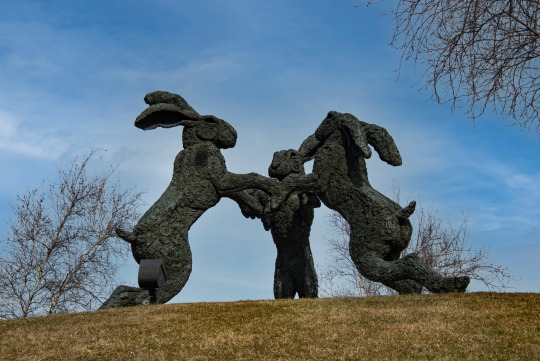
Giant Dancing Rabbits of Ballantrae Park by Doris Rapp
#ballantrae community park#dublin ohio#franklin county#delaware county#union county#nothing answered yes
4 notes
·
View notes
Text
I think of you all of the time, now that you're gone
I've been doin' all kinds of drugs, to get you out of my mind
'Cause I noticed you don't like me no more,
And it breaks my heart
So I'll just drift away, and disappear for a while
someday i'll get it - Alek Olsen
3 notes
·
View notes
Text
sorry for once again being autistic about the master of ballantrae but it's just. it's about mackellar spending the entire novel carefully crafting the illusion of himself as the perfect reliable narrator only for the fictional editor to dismantle his manuscript in front of him while all he can do is watch on helplessly. it's the master spending the entire novel creating the public image of a romantic jacobite hero only for stevenson to tear it down completely by stripping the master of his props and costume and leaving him naked and alone on the stage he built for himself. do you realise what a fantastic fucking satire of scottish romanticism this book is. do you realise how this man lured us in with the promise of walter scott-esque tartan heroes and a monarch-of-the-glen-style backdrop, only to turn round and go 'fuck you, well done for falling for the farce. there is no jacobean hero you stupid slut.' we can bend over backwards making up tales of noble scottish victors triumphing in the face of adversity but at the end of the day when the flag stops flying and the english go home all they will leave behind is emptiness and ruin and a country branded permanently by their conquerors' greed
#sorry a little bit autistic about my favourite book did you know this about me#you will if you have followed me for a while i assume#i really need to start tagging my ballantrae posts but you already know my ass will forgor haha !#going to make jed talk about this in a future dtl chapter because i think he'd agree with me#and i need to have him correct octavius on matters of literary analysis#octavius is so middle class and english he'd definitely be one of those people who doesn't really get the satire aspect of a book like this
4 notes
·
View notes
Text



The Master of Ballantrae - BBC - March 9, 1975 - April 13, 1975
Action / Adventure (6 episodes)
Running Time: 30 minutes
Stars:
Brian Cox as Henry Durie
Julian Glover as James Durie
Fulton Mackay as Ephrain Mackellar
Alison Forsythe as Alison Graeme
Joseph Craig as John Paul
Bryden Murdoch as Lord Durisdeer
Renu Setna as Secundra Dass
Gordon Reid as Maconachie
Paul Kermack as Colonel Francis Burke
Jane Ferguson as Katherine
#The Master of Ballantrae#TV#BBC#1970's#Action#Adventure#Brian Cox#Julian Glover#Fulton Mackay#Alison Forsythe
1 note
·
View note
Text

The Master of Ballantrae (1889).
A harrowing tale of two brothers, one good and the other evil, that begins in Scotland with the Jacobite Rebellion and ends in the frontier lands of New York.
0 notes
Photo



(via Ballantrae Real Estate Market Report June 2023)
Ballantrae in Port St. Lucie Real Estate Market Report for June 2023
0 notes
Text
I like when books have Maps and Charts in them and I think that all books should have such things.
and books which already have them? I think they should have More Maps and Charts.
#em is posting about temeraire#I do not know Where anything is or Who anyone is or What anything is and hypothetically these things should be explained by the book#but also I would like a Little Help and Visual-Spatial Understanding#what I am wishing for at this time is a Big Fucking Brick of a Book which has Maps and Illustrations and Scale Drawings#which. I do have one of those for the aubreyad and that's how I got informed about ***** ******** ***** ** * ******** ********#so it is not entirely a Good and Fun thing to have one of those#but also I have 'if it's bigger than a horse I can't conceptualize it well' kind of brain which is Hard with both ships and dragons#hey waitaminute I just remembered the fact that my very second piece of Polished aubreyad art (circa 2020) has dragons in it#y'know what lacking this maybe I will try to go back to the Very Scary Bookstore sometime soonishly#and see if they still have that copy of the hornblower companion... hardly anyone goes into that bookstore so I think they very well might#(very nearly everything about that bookstore frightens me but they have really neat stuff there! real copy of porto bello gold!#the hornblower editions with the scratchboard covers! lynd-ward-illustrated master of ballantrae!)
23 notes
·
View notes
Text
Aziraphale’s secret investigation and overlooked Clues

Remember this frame from Good Omens S02E06? Apparently Aziraphale had been using the empty carton box brought by Jim to store things in. It became a new home to at least two out of three “Lost Quartos” — the supposedly lost Shakespeare plays briefly but hilariously mentioned in the Good Omens book — as well as a very mysterious legal document.

Thought probably half of the Good Omens analysts here, including the ever so wonderful @fuckyeahgoodomens, who managed to find some information about the deceased John Gibson from New Cumnock (1855 - 1905).
Unfortunately the most interesting thing about this early 20th century provincial postmaster was his youngest child James (1894 - 1973), a quite famous stage (West End!) and film actor immortalized on screen in The Master of Ballantrae (1962), Witch Wood (1964) and Kidnapped (1963).
After that particular discovery the fandom-wide search seemingly led nowhere and the topic died a premature death.
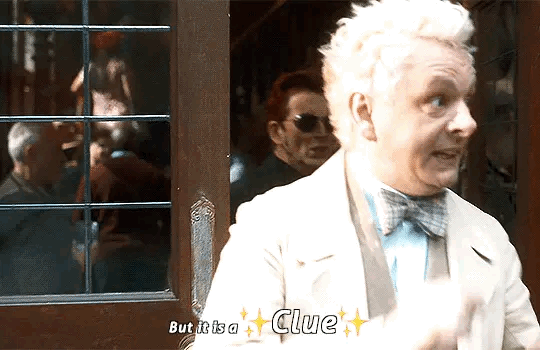
And I almost figured it out seven months ago.
“But Yuri, you’re so clever. How can somebody as clever as you be so stupid?”, you probably want to shout across a busy London street at this point. Well, let me tell you. Much like Aziraphale, I'm blindingly intelligent for about thirty seconds a day. I do not get to choose which seconds and they are not consecutive.
Only tonight the stars have aligned in an ineffable way.

For those of you who don’t follow this account, some time ago I’ve realized that John Gibson isn’t the only testator whose estate was being investigated by Aziraphale right before The Whickber Street Traders and Shopkeepers Association monthly meeting.
If you watch S2 finale closely enough, you should notice that Crowley not only stress cleans Aziraphale’s bookshop — he also goes through the books and papers on his desk between the last three angels leaving the bookshop and Maggie and Nina’s intervention. A seemingly permanent arrangement of the props post-shooting, visible in detail both on Radio Times tour and SFX magazine photo shoot, sheds even more light on this detail.

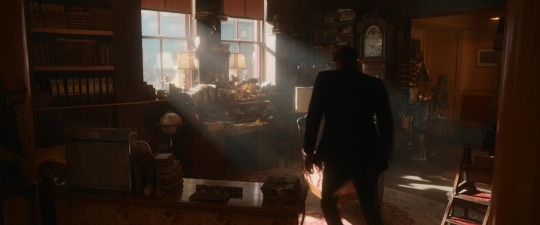

The close-ups published after S2 release are legible enough to refer us to a much more prominent historical figure, Josiah Wedgwood (1730 – 1795) — an English potter, entrepreneur and abolitionist. Founding the Wedgwood company in 1759, he developed improved pottery bodies by systematic experimentation, and was the leader in the industrialisation of the manufacture of European pottery.

Long story short, I transcribed the handwritten pages abandoned on Aziraphale’s desk, found out the source and the full text of what could be identified as Wedgwood’s last will and testament, took a walk to visit his Soho workshop, and proceeded to write a lengthy meta analysis about it.
I was today’s years old when I realized that there’s something else connecting those two dead British men.
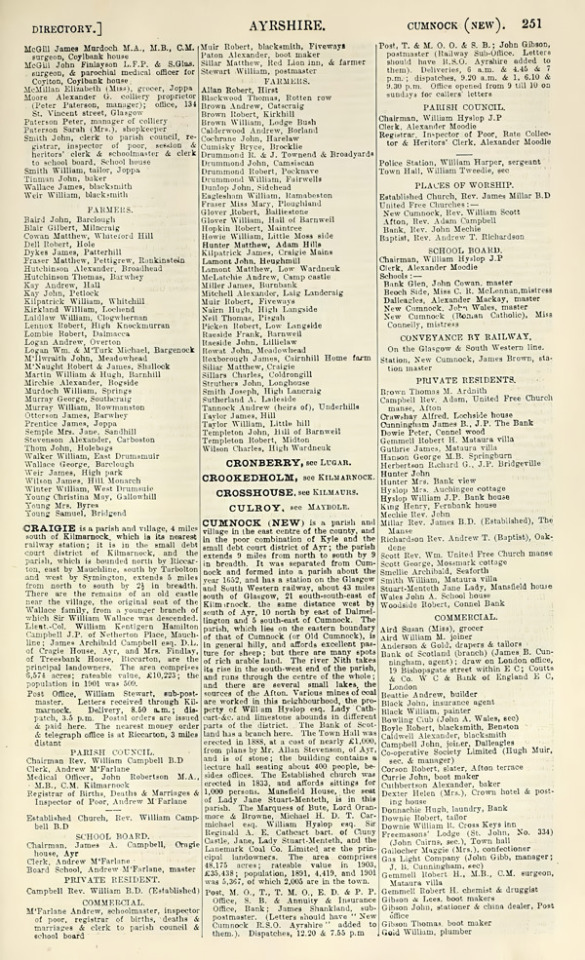

The Scottish Post Office Directory of 1903 recorded John Gibson from New Cumnock as a “stationer and china dealer” (above) operating from the shop located in the town’s post office building.
Indeed, a close look at his post office shop window in the Henderson Building (below, bottom left) reveals an artful display of fine china and pottery next to postcards printed by Gibson.
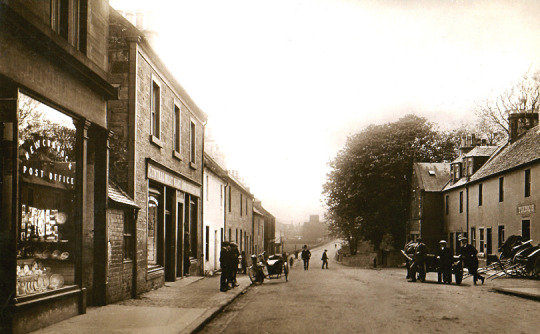
There are multiple ways to connect this surprising link with possible S3 plot points, obviously, but it’s getting late, so let’s just name the two most important ones.
You’ve probably heard of the Holy Grail, maybe from Monty Python or Good Omens S01E03 1941 flashback. Depending on the version of the story, if can be a cup, a chalice, a bowl, or a saucer — but almost always a dish or a vessel connected personally, physically and metaphysically to Jesus (unless you’re partial to Wolfram von Eschenbach’s idea that the Grail was a stone, the sanctuary of the neutral angels who took neither side during Lucifer's rebellion).
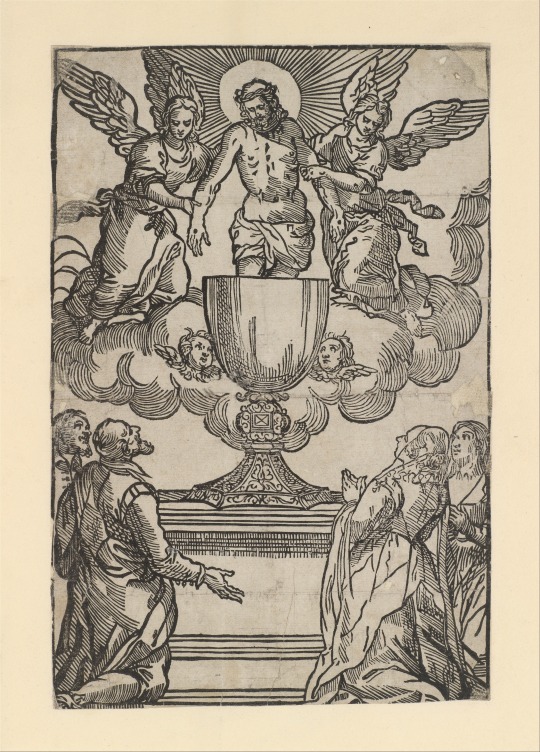
A slightly more obscure dish related to the Son of God appears in the sixteenth chapter of the Book of Revelation as a vital part of His Second Coming. The Seven Bowls (or cups, or vials) of God’s Wrath are supposed to be poured out on the wicked and the followers of the Antichrist by seven angels:
Then I heard a loud voice from the temple telling the seven angels, “Go and pour out on the earth the seven bowls of the wrath of God.” So the first angel went and poured out his bowl on the earth, and harmful and painful sores came upon the people who bore the mark of the beast and worshiped its image.
The second angel poured out his bowl into the sea, and it became like the blood of a corpse, and every living thing died that was in the sea.
The third angel poured out his bowl into the rivers and the springs of water, and they became blood. And I heard the angel in charge of the waters say, “Just are you, O Holy One, who is and who was, for you brought these judgments. For they have shed the blood of saints and prophets, and you have given them blood to drink. It is what they deserve!” And I heard the altar saying, “Yes, Lord God the Almighty, true and just are your judgments!”
The fourth angel poured out his bowl on the sun, and it was allowed to scorch people with fire. They were scorched by the fierce heat, and they cursed the name of God who had power over these plagues. They did not repent and give him glory.
The fifth angel poured out his bowl on the throne of the beast, and its kingdom was plunged into darkness. People gnawed their tongues in anguish and cursed the God of heaven for their pain and sores. They did not repent of their deeds.
The sixth angel poured out his bowl on the great river Euphrates, and its water was dried up, to prepare the way for the kings from the east. And I saw, coming out of the mouth of the dragon and out of the mouth of the beast and out of the mouth of the false prophet, three unclean spirits like frogs. For they are demonic spirits, performing signs, who go abroad to the kings of the whole world, to assemble them for battle on the great day of God the Almighty. (“Behold, I am coming like a thief! Blessed is the one who stays awake, keeping his garments on, that he may not go about naked and be seen exposed!”) And they assembled them at the place that in Hebrew is called Armageddon.
The seventh angel poured out his bowl into the air, and a loud voice came out of the temple, from the throne, saying, “It is done!” And there were flashes of lightning, rumblings, peals of thunder, and a great earthquake such as there had never been since man was on the earth, so great was that earthquake. The great city was split into three parts, and the cities of the nations fell, and God remembered Babylon the great, to make her drain the cup of the wine of the fury of his wrath. And every island fled away, and no mountains were to be found. And great hailstones, about one hundred pounds each, fell from heaven on people; and they cursed God for the plague of the hail, because the plague was so severe.

#good omens#good omens meta#good omens analysis#aziraphale#aziraphale’s bookshop#set design#good omens props#the good omens crew is unhinged#john gibson#josiah wedgwood#fine china#pottery#holy grail#seven bowls#second coming#yuri is doing her thing
91 notes
·
View notes
Text

John Cairney looking distressingly fine as James Durie, the Master of Ballantrae in the 1962 TV series. (which even more distressingly appears to be completely unavailable to watch. ;___;)
#The Master of Ballantrae#Robert Louis Stevenson#James Durie#John Cairney#what does it say about me that my first response to this picture was to go 'HYLAS NOOOO'#😅
15 notes
·
View notes
Text


On December 28th 1908 Postman Robert Cunningham set off in blizzard conditions from Ballantrae to deliver the mail to the Glenapp residents. less than 2 miles away.
After two days when he had not returned a search party was organised, his body was found lying on his mail sack and covered by the snow.
In 1909 a monument was erected on the A77 between Stranraer and Ballantrae at Carlock Hill by postmen from around the country to commemorate the heroic attempt of a comrade. The inscription on the Cairn reads "In memory of Robert Cunningham, Postman who perished here in a snowstorm 28th December 1908. Erected by public Subscription.
In 1991 the Memorial was restored at the expense of the Union of Communications Workers and rededicated on 20th. September 1992.
37 notes
·
View notes